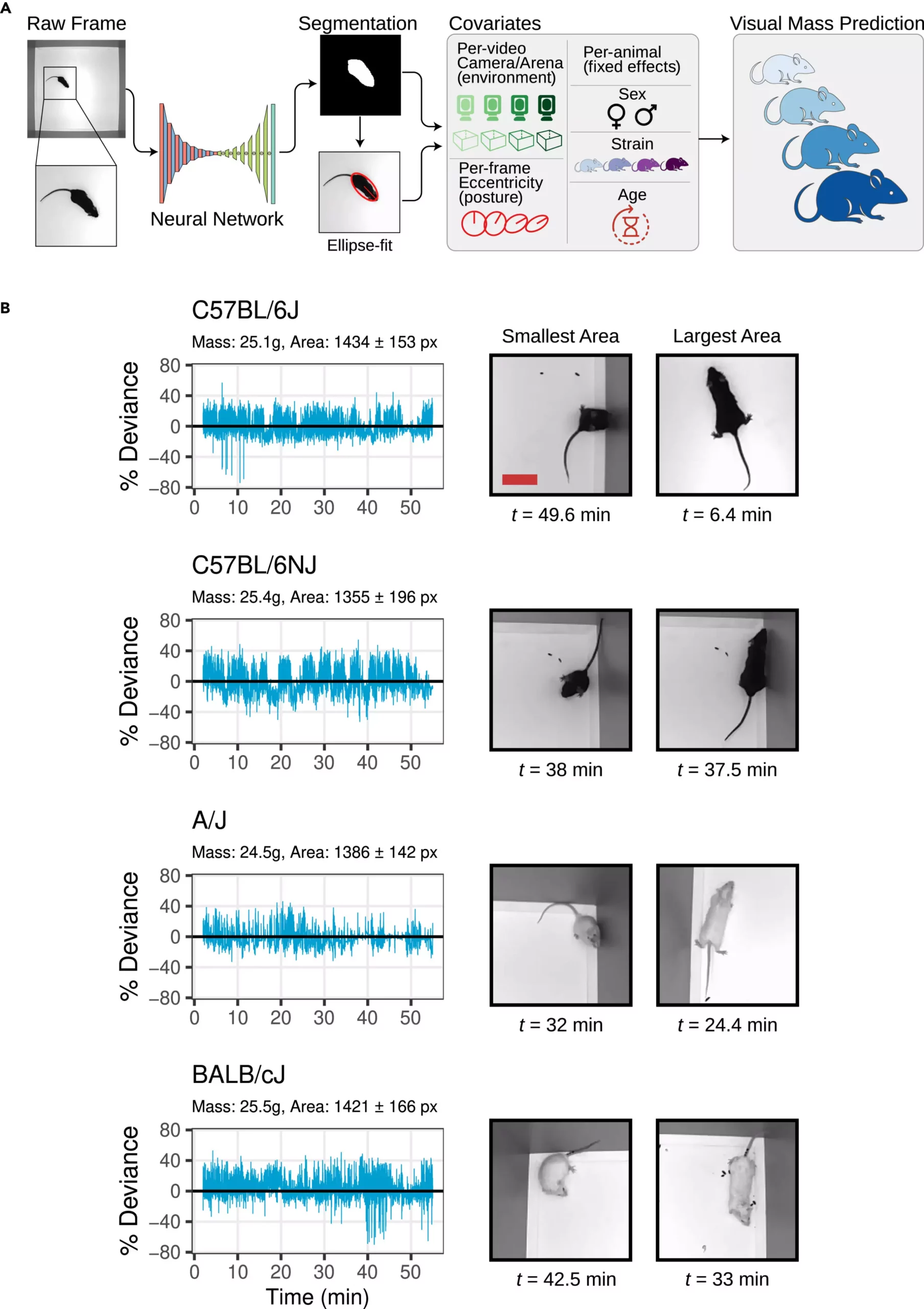Measuring the body mass of mice has long been a critical aspect of biomedical research. Traditionally, this has involved removing the mice from their cages and placing them on scales, a process that can be stressful for the animals and introduce variables that impact the reliability of the data. This method also limits the frequency of measurements, further complicating the accuracy of results. Recognizing the need for a better approach, a research team led by JAX Associate Professor Vivek Kumar set out to develop a non-intrusive method using computer vision technology.
The Development Process
The team, including computational scientists and software engineers, analyzed a vast mouse video dataset to create a method that could calculate body mass with less than a 5% error rate. This method accounts for the dynamic and flexible nature of mice, as well as the diverse range of strains used in laboratory settings. By utilizing machine learning tools and statistical modeling, the team was able to overcome these challenges and produce a reliable way to measure mouse body mass continuously and accurately.
One of the main obstacles faced by the research team was the variability in mouse behavior, size, and coat color across different strains. This necessitated the use of multiple visual metrics and advanced computer vision techniques to ensure accurate measurements. Despite the fact that mice are highly active and frequently change posture, the team was able to train their models to predict body mass by leveraging their diverse dataset, ultimately paving the way for genetic and pharmacological experiments.
The introduction of this non-intrusive method offers several key advantages for researchers. It allows for the detection of subtle changes in body mass over multiple days, which could be crucial for studies involving drug treatments or genetic modifications. Moreover, this method could serve as a valuable tool for general health monitoring in mice, with the potential for adaptation to other experimental environments and organisms in the future. By enabling more frequent and accurate measurements, this new approach has the capacity to significantly enhance the quality and reproducibility of preclinical studies involving mice.
The development of a non-intrusive method to measure mouse body mass using computer vision technology represents a significant step forward in the field of biomedical research. By reducing the stress on the animals and improving the frequency and accuracy of measurements, this innovative approach has the potential to revolutionize the way researchers conduct experiments involving mice. With further refinement and adaptation, this method could prove invaluable in a wide range of scientific studies, ultimately advancing our understanding of health and disease.


Leave a Reply